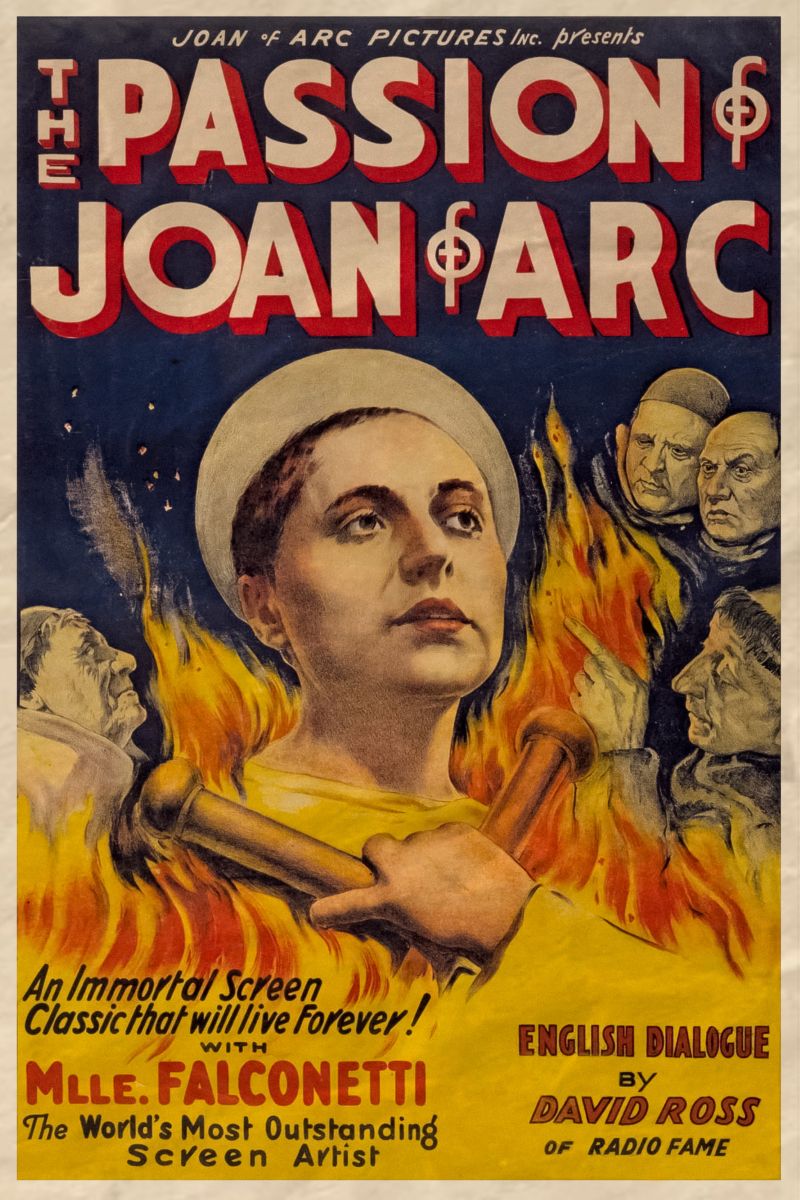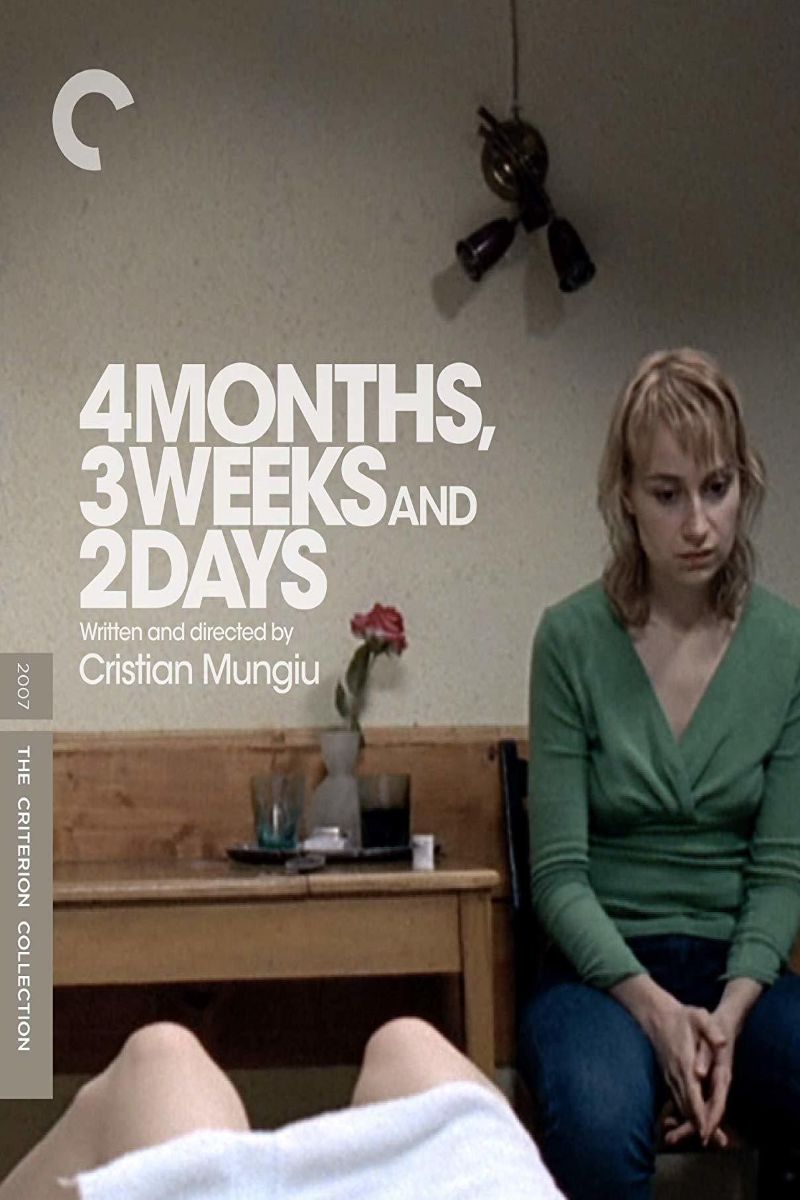
The Passion of Joan of Arc
La Passion de Jeanne d'Arc
Carl Dreyer's silent French film is as much an example of female strength today as it was 90 years ago. Based on the actual record of the trial of Joan of Arc, it explores the martyr as a Christlike figure whose strength, will, and determination endures even as she's led to a stake to be burned alive.
主演
🎥 影评与解读
Carl Theodor Dreyer’s “The Passion of Joan of Arc” stands as one of cinema’s most transcendent achievements, transforming the historical trial of Joan of Arc into a profound meditation on female spiritual authority, institutional oppression, and the unbreakable power of individual conviction. Nearly a century after its 1928 release, this silent masterpiece continues to resonate as both a pioneering work of cinematic art and a revolutionary feminist text that challenges patriarchal religious and political authority through its unflinching portrayal of a woman who refused to be silenced.
Revolutionary Cinematic Language
Dreyer’s formal innovations in “The Passion of Joan of Arc” created an entirely new cinematic vocabulary for depicting female spiritual experience and resistance. His use of extreme close-ups—particularly of Renée Jeanne Falconetti’s face—revolutionized how cinema could capture interiority and emotional truth. These intimate framings reject the spectacle of traditional historical epics, instead creating a claustrophobic intensity that places viewers directly within Joan’s psychological and spiritual experience.
The film’s visual language deliberately eschews the grandeur typically associated with religious or historical cinema. Instead of sweeping vistas or elaborate costumes, Dreyer employs stark, minimalist settings and harsh lighting that emphasize the brutal reality of institutional persecution. This aesthetic choice transforms Joan’s trial from distant historical event into immediate, visceral experience of oppression that transcends its medieval setting.
The director’s decision to shoot in chronological order, pushing Falconetti to emotional extremes throughout the filming process, created a documentary-like authenticity that conventional acting techniques could not achieve. This method resulted in a performance that Pauline Kael called “the finest performance ever recorded on film”—one that captures genuine spiritual anguish rather than mere theatrical representation.
Female Authority Against Patriarchal Institution
The film’s central conflict revolves around Joan’s assertion of divine authority against the ecclesiastical patriarchy that seeks to destroy her. Her claim to receive direct communication from God represents a fundamental challenge to religious institutions that monopolize access to divine truth through male intermediaries. Joan’s insistence on her visions threatens not just religious orthodoxy but the entire structure of patriarchal authority.
Dreyer’s portrayal reveals how institutional power operates through psychological manipulation and spiritual terrorism. The relentless questioning, theological entrapment, and mental exhaustion documented in the film demonstrate systematic techniques for breaking female resistance. Joan’s interrogators don’t simply seek confession; they demand the complete surrender of her spiritual autonomy and self-determination.
The film shows how patriarchal institutions weaponize women’s own spirituality against them, using theological arguments to justify their oppression while denying them agency over their own religious experience. Joan’s refusal to recant represents more than religious conviction; it’s an assertion of women’s right to spiritual self-determination independent of male religious authority.
The Economics of Female Sanctity
Joan’s trial reveals the economic and political dimensions underlying religious persecution of women who claim spiritual authority. Her military success and political influence threatened not just religious doctrine but the material interests of powerful men who profited from war and political instability. The film subtly demonstrates how accusations of heresy often mask economic motivations for eliminating threatening female figures.
The ecclesiastical court’s proceedings reveal how institutional Christianity has historically criminalized forms of female spirituality that bypass official channels of religious authority. Joan’s direct relationship with the divine eliminates the need for priestly mediation, threatening the economic foundation of clerical power. Her persecution becomes a warning to other women who might claim independent spiritual authority.
Embodied Spirituality and Female Suffering
Dreyer’s unflinching documentation of Joan’s physical and psychological torment creates a complex meditation on female suffering and spiritual transcendence. The film neither glorifies nor sensationalizes her pain but presents it as the inevitable consequence of challenging patriarchal authority. Joan’s suffering becomes both politically meaningful resistance and spiritual transformation.
The film’s treatment of Joan’s body—her shaved head, her tears, her physical vulnerability—subverts traditional representations of female martyrdom that emphasize passive acceptance of suffering. Instead, Dreyer shows active resistance maintained even through physical degradation. Joan’s spiritual strength emerges not despite her vulnerability but through it, challenging masculine definitions of power based on physical dominance.
The intimate documentation of her emotional states reveals the internal resources women draw upon when facing institutional violence. Joan’s tears, expressions of doubt, and moments of despair humanize her without diminishing her spiritual authority, creating a model of female strength that incorporates rather than denies emotional complexity.
Silence and Voice in Patriarchal Trial
The film’s status as a silent work takes on additional significance given its focus on a woman whose voice threatened established authority. Joan’s silence in the film paradoxically amplifies her resistance, allowing Falconetti’s facial expressions to convey defiance that transcends spoken language. This visual emphasis creates a universal language of female resistance that doesn’t depend on specific cultural or linguistic contexts.
The absence of audible dialogue forces viewers to focus on the power dynamics visible in posture, expression, and spatial relationships. The interrogators’ aggressive positioning, their collective authority, and their attempts to diminish Joan through physical intimidation become starkly apparent without the distraction of verbal argumentation. The film reveals how patriarchal authority operates through non-verbal domination as much as theological debate.
Joan’s moments of silent contemplation become acts of resistance against demands for immediate response and submission. Her refusal to be rushed into answers challenges the masculine expectation of quick capitulation, asserting her right to spiritual reflection and careful consideration even under extreme pressure.
Historical Resonance and Contemporary Relevance
The film’s documentation of institutional gaslighting, psychological manipulation, and the systematic destruction of female credibility feels remarkably contemporary. Joan’s interrogators employ techniques—questioning her sanity, isolating her from supporters, demanding impossible choices—that remain familiar weapons against women who challenge authority in any era.
The trial’s focus on Joan’s clothing, her behavior, and her claims to independence echoes ongoing attempts to police women’s self-presentation and limit their public authority. The ecclesiastical court’s obsession with her masculine dress and behavior reveals how gender nonconformity has long been weaponized against women who threaten traditional power structures.
Joan’s insistence on the reality of her spiritual experience, despite institutional attempts to convince her it was delusional, speaks to contemporary struggles around women’s credibility and the dismissal of female testimony in legal, medical, and social contexts.
Cinematic Influence and Feminist Film History
“The Passion of Joan of Arc” established crucial precedents for feminist cinema’s approach to representing female experience. Dreyer’s rejection of the male gaze in favor of psychological interiority influenced generations of filmmakers seeking alternatives to conventional representations of women. The film demonstrated that female-centered narratives could achieve both artistic excellence and emotional power without conforming to masculine expectations of dramatic structure.
The film’s influence extends beyond cinema into broader discussions of how visual media can represent female spiritual and political authority. Its techniques for depicting interiority, resistance, and transcendence provide models for contemporary artists working to capture women’s experiences of oppression and empowerment.
Contemporary feminist filmmakers from Agnès Varda to Céline Sciamma have acknowledged the film’s influence on their own approaches to representing women’s inner lives and resistance to patriarchal authority.
Spiritual Feminism and Religious Resistance
The film offers a complex model of spiritual feminism that neither rejects religious experience nor accepts patriarchal interpretations of divine will. Joan’s direct relationship with God bypasses institutional mediation while maintaining profound religious commitment, suggesting possibilities for female spirituality that transcends denominational boundaries.
Her refusal to accept male religious authorities as final arbiters of divine truth creates space for women’s independent spiritual development and theological interpretation. The film suggests that genuine religious experience often conflicts with institutional religious control, particularly when that experience empowers marginalized groups.
Joan’s martyrdom becomes not passive acceptance of suffering but active resistance to spiritual oppression, transforming her death into a victory over attempts to silence female religious authority.
Technical Innovation and Emotional Truth
Dreyer’s groundbreaking cinematography—particularly his use of extreme close-ups and unconventional camera angles—created new possibilities for capturing emotional and spiritual reality on film. These technical innovations served feminist ends by prioritizing psychological truth over visual spectacle, creating intimacy rather than distance between viewers and Joan’s experience.
The film’s stark visual design eliminates distracting period details to focus on universal dynamics of power, resistance, and spiritual conviction. This minimalist approach allows Joan’s struggle to transcend its specific historical context and speak to contemporary experiences of institutional oppression.
The collaboration between Dreyer’s direction and Falconetti’s performance created a new standard for representing female strength that influenced subsequent portrayals of women facing institutional violence and spiritual crisis.
Legacy and Continuing Influence
“The Passion of Joan of Arc” remains unmatched in its combination of artistic innovation and feminist political content. Its influence extends far beyond cinema into discussions of women’s spiritual authority, institutional resistance, and the representation of female heroism in visual media.
The film’s continued relevance speaks to the persistence of patterns it documented: the institutional suspicion of female authority, the use of psychological manipulation to control women’s self-determination, and the power of individual resistance to collective oppression.
Nearly a century after its creation, the film continues to inspire women facing institutional pressure to conform, surrender their convictions, or accept limitations on their authority and voice.
Conclusion: Eternal Resistance
“The Passion of Joan of Arc” achieves its enduring power through its absolute commitment to documenting one woman’s refusal to surrender her spiritual and political autonomy regardless of consequences. Dreyer and Falconetti created a work that transforms historical martyrdom into contemporary inspiration, showing how individual resistance can challenge systems of oppression that seem insurmountable.
The film’s technical innovations serve its political vision: every formal choice prioritizes Joan’s experience over institutional perspective, creating empathy with her struggle rather than detached historical observation. This alignment of artistic means with feminist ends produced a work that remains as radical today as it was revolutionary in 1928.
Through its unflinching portrayal of institutional violence against female authority, “The Passion of Joan of Arc” becomes more than historical drama—it serves as both witness to women’s historical oppression and inspiration for contemporary resistance. Joan’s final moments, facing execution with unbroken spiritual conviction, provide a model of female strength that transcends religious boundaries to speak to all who refuse to let institutional power silence their voices or compromise their truths.
🏆 获奖与荣誉
- • Village Voice 8th Greatest 20th Century Film
- • National Society of Film Critics Top 100 Essential Films
- • Criterion Collection
- • 98% Rotten Tomatoes
⭐ 评分与链接
相关推荐
评论与讨论
与其他观众一起讨论这个视频
加入讨论
与其他观众一起讨论这个视频
评论加载中...



